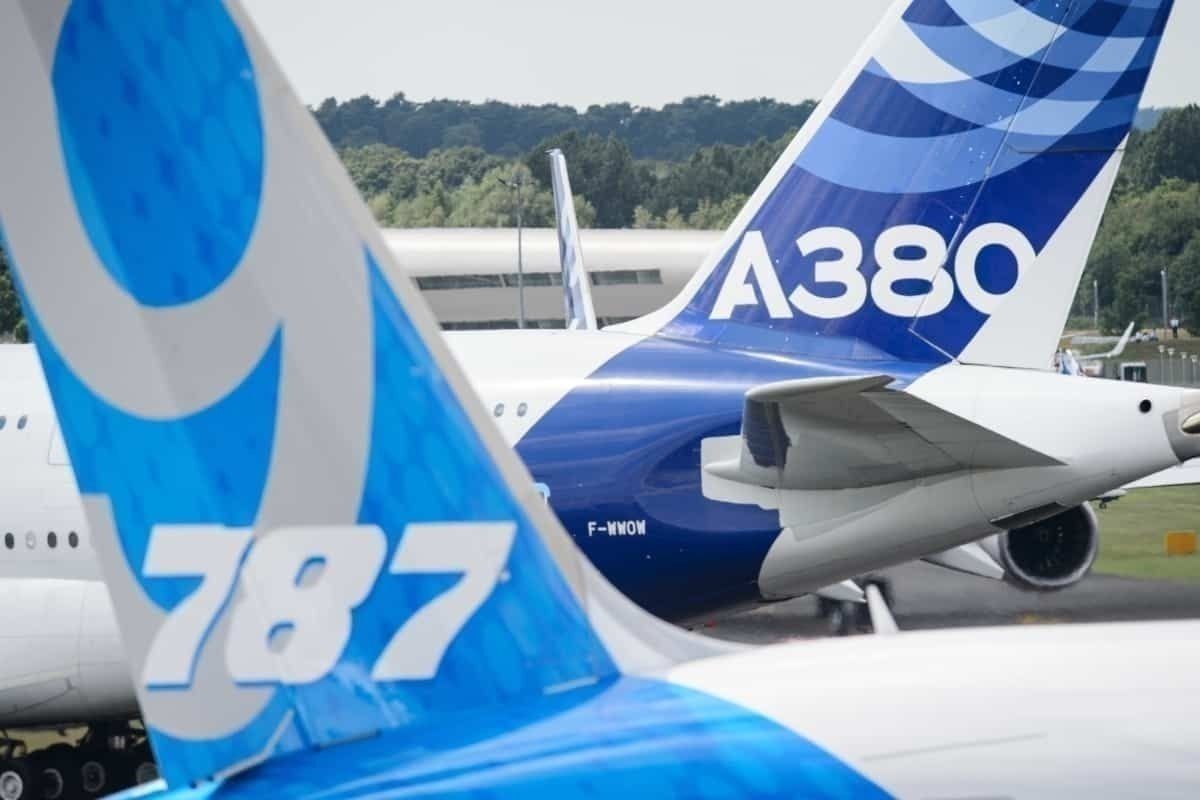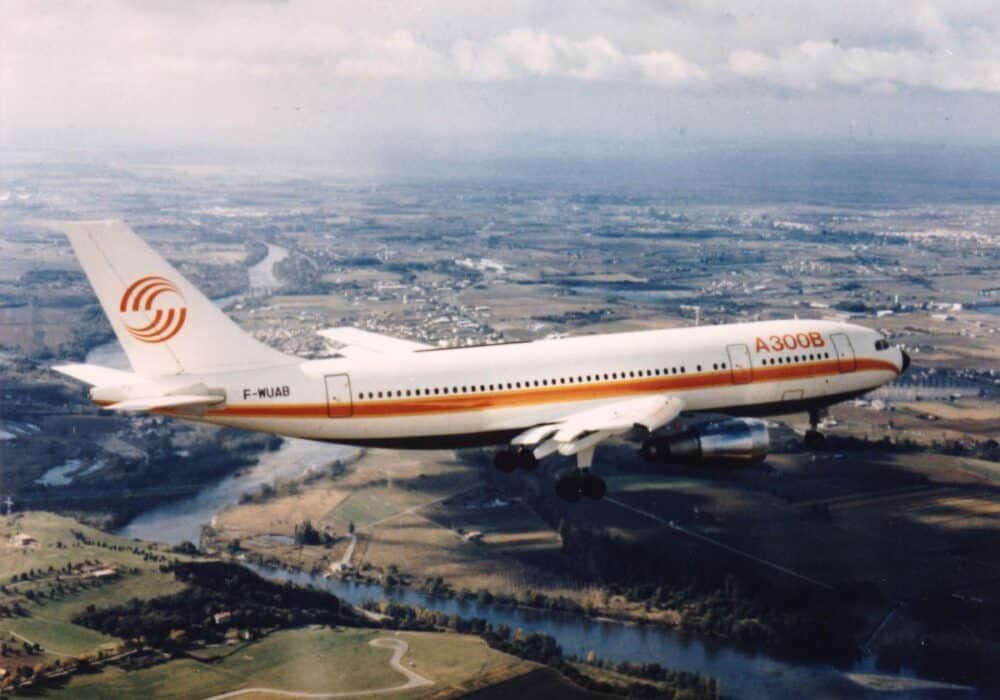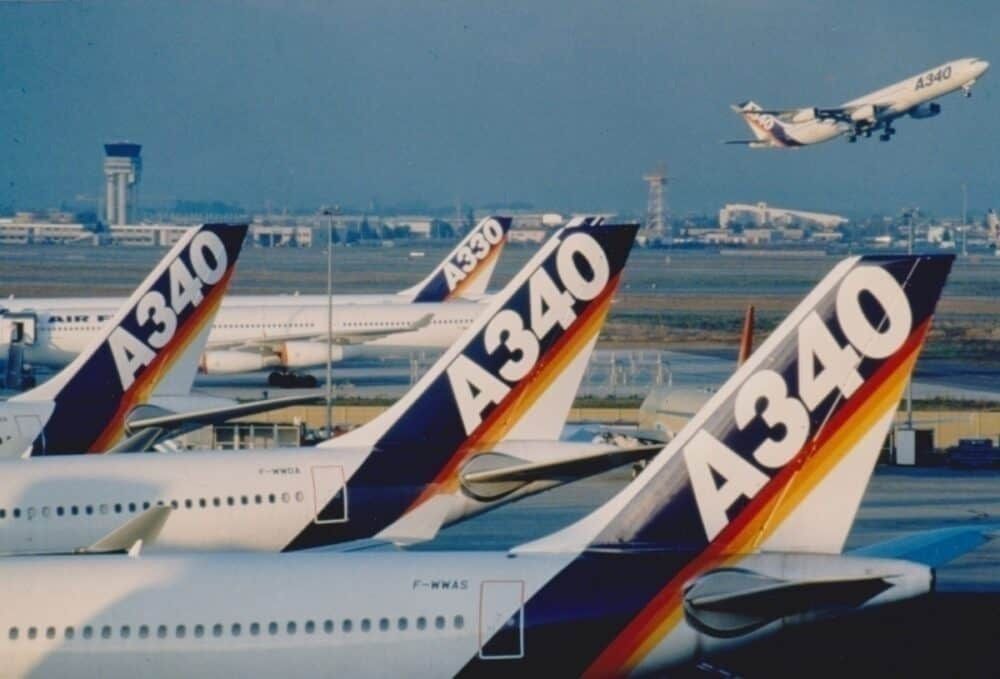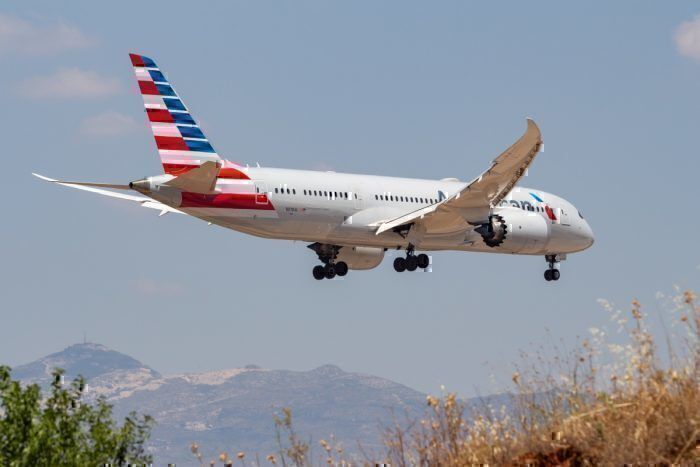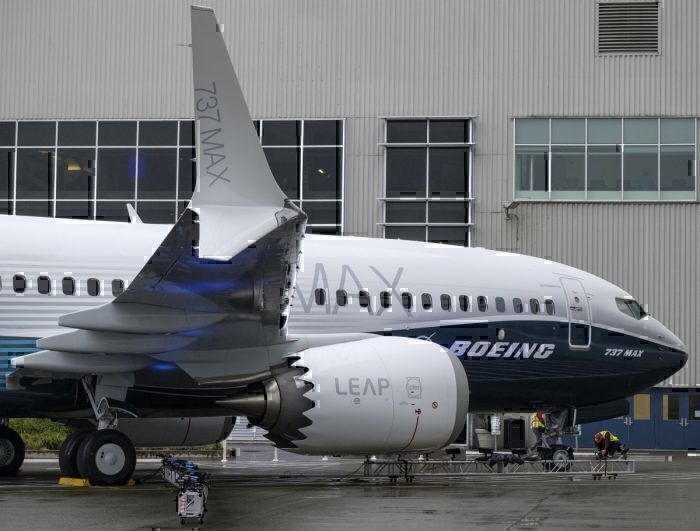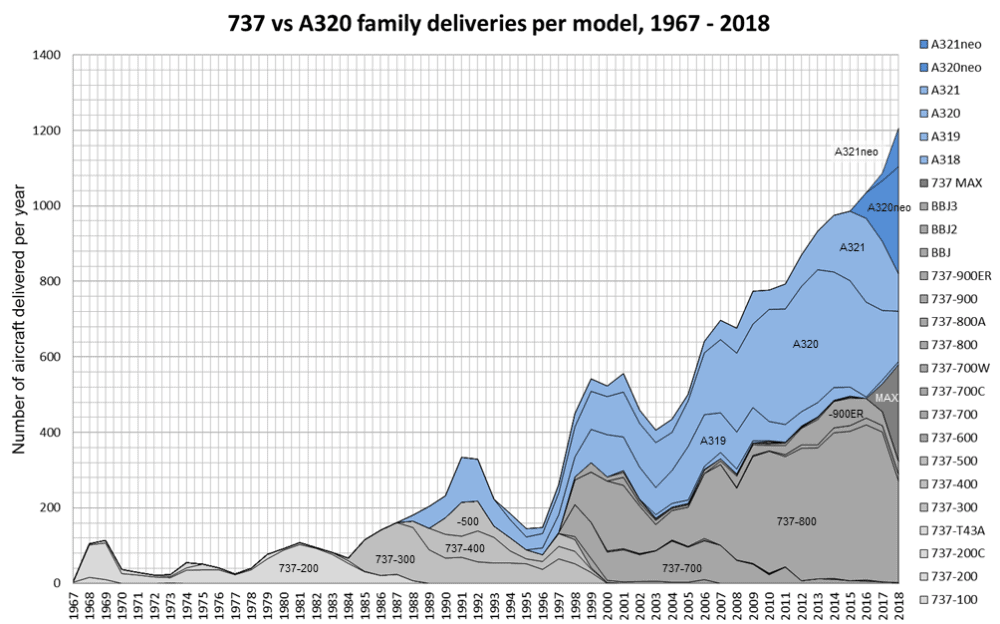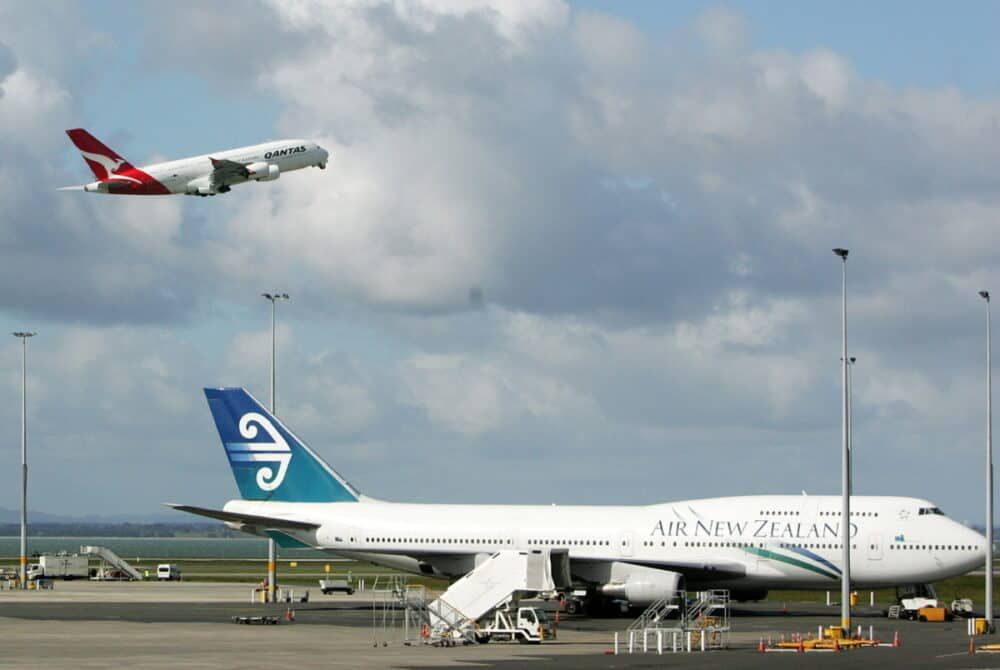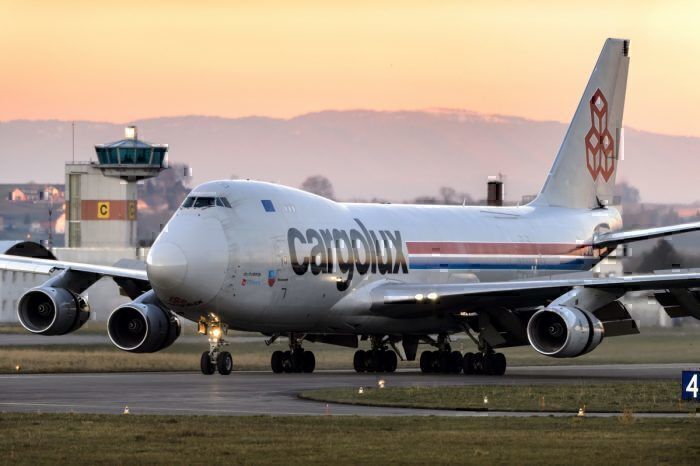There is no duopoly in the world fiercer or a rivalry as complex as Boeing vs. Airbus. Both firms have been around for decades, developing many of the aircraft that we love and have ushered in a new golden age of air travel. But which company is more successful?
Before we dive in, there is a caveat about this comparison.
Both firms are titans in their own right, having survived other commercial passenger attempts like Lockheed Martin and Convair. Airbus and Boeing are huge companies, both winning government contracts, powerful political sway, and have an in-depth history. To summarise them and their relationship in a single article is not easy and shouldn't be the end-all comparison, merely the beginning.
Stay informed: Sign up for our daily aviation news digest.
How did they become rivals?
All stories have a beginning, and for Boeing vs. Airbus, it starts with the founding of Airbus.
Airbus came into existence during the development of the A300 aircraft. State-run or influenced airlines in the 1960s wanted to upgrade their aircraft to the next generation (they had a mix of Boeing 707s and others). However, there weren't any suitable European aircraft available on the market to satisfy their needs. European governments wanted a slice of the growing airframe market, but Boeing and other builders were too big for any single European firm to take on.
Thus they formed a conglomerate of European firms to build an aircraft with the express purpose of competing with American plane manufacturers. This conglomerate would become Airbus, and they would bring to the market the A300 as a Boeing rival.
From here, the race was on.
Building a competitive portfolio of aircraft
Right from the get-go, the European government had a plan to build a series of aircraft to compete with each Boeing offer. Once the A300 and its variant the A310 were complete, various tenders went out for a competitor to the Boeing 747 and Boeing 737.
Interestingly, each tender failed to secure a new consortium on the market and defaulted back to Airbus (who logically, in retrospect, should have had the contract first). They would go on to develop the A320, A330, and A340, respectively. You can read about why Airbus built each aircraft here.
Boeing hits back
By now, Airbus had become Boeing's enemy number one on the aircraft marketplace. Both firms were friendly to each other, although they were very much in competition.
Airbus managed to strike a blow to Boeing when they secured a large Airbus A320 order with American Airlines (something that they repeated only last year), right in Boeing's backyard. Thus Boeing needed a new aircraft to compete and bring the ball back into their court.
The Boeing 777 was to be the perfect aircraft platform to rival Airbus A330 and A340 series. Boeing consulted with several airlines to design the aircraft, and its technological improvements managed to undercut sales of the A340 dramatically.
Deciding the future direction of aviation
At this point, Airbus and Boeing faced a crossroads. With air travel demand on the rise, the firms had to design a new aircraft fit for the future of the market.
- Airbus chose to go bigger, build the A380 to compete with the Boeing 747, and focus on hub to hub travel.
- Boeing decided to focus on more efficient aircraft and point to point, developing the Boeing 787.
The Airbus A380 was a game-changer in the market, able to carry more passengers than ever before and allow airlines to dominate long-haul routes. The Boeing 787 however, was fuel-efficient and allowed airlines to reduce costs. It also made smaller routes connecting two points (without traveling through hubs) more profitable.
With rising fuel prices tipping the market towards the Boeing 787, the A380 never achieved its full potential. Boeing had backed the right horse in this particular race.
Airbus would follow the success of the Boeing 787 with the Airbus A350 (successor to the A340) and the Airbus A330neo.
Recent events hit both firms
This article would be amiss not to discuss crucial events that have occurred in recent history. The crashing of two Boeing 737 MAX aircraft dramatically changed the narrowbody landscape between the two competitors, but not for the better of either.
Boeing's reputation did take a hit, but there were very few airlines that changed orders or decided to move away from the American firm. This may have something to do with the fact that Airbus has a colossal backlog of aircraft, and it would be too expensive for Boeing's airlines to change to a competitive product (all crew would need to retraining). It is also likely that Boeing has cultivated relationships with its airline customers and will take care of them until the 737 MAX situation is resolved.
The current aviation crisis in 2020 has also dropped the demand for new aircraft. With many countries under lockdown, and international travel forever changed, it is unknown what long term impacts this will have for both airframe makers. If their customer airlines go out of business, then it won't matter which firm is 'better.'
What is the competitive landscape like between the two airframe builders?
Competition in the narrowbody market
We begin with the narrowbody marketplace. There is one significant rivalry here, the Boeing 737 vs. the Airbus A320 series. Technically the Boeing 757 also competes with the A321XLR, but the former is no longer in production, and the latter isn't flying yet.
Both the A320 series and 737 series have been updated over time with new engines, winglets, and other improvements to remain competitive. It has helped these two narrowbody lines remain incredibly popular.
Looking at sales, the Boeing 737 held the crown for the longest time as the best selling commercial aircraft and was only eclipsed by the Airbus A320 in the last year.
The race between the two types is so tight that it is almost impossible to determine a 'winner.' The A320 was designed as a Boeing 737 competitor and has done its job marvelously. But we can't ignore the original 737 design has won hearts and changed the aviation industry for decades. Had both aircraft been released at the same time, we could have had a 'definitive' winner, but it would not be fair to compare them on market performance today.
As for the future of this narrowbody competition, the ball is now firmly in Boeing's court to create a successor for the 737 design in the next decade that can rival the A321XLR improvements.
A full examination of the Boeing 737 vs. Airbus A320 is here.
Competition in the widebody market
Widebodies are where the real clash of the titans takes place between the two firms.
There are three distinct markets:
- Boeing 787 vs. Airbus A330
- Boeing 777 vs. Airbus A350
- Boeing 747 vs. Airbus A380
The first, the 787 vs. the A330, has Airbus on the back foot. While the A330 was fantastic as a cheap, high capacity aircraft, the entry of the 787 (and its production ramping up) has made the A330 look old. The A330neo revamp is an improvement (and it sells cheaper than the 787), but sales numbers show the ball in Boeings court. You can read about the A330 vs. 787 here.
The Boeing 777 vs. Airbus A350 is a different battle. Both aircraft lines have become flagships of each respective firm, and the winner in the future will determine who builds the most premium aircraft. Airbus has so far impressed airlines with its A350 series, but that may change with the 777X on the horizon.
As for the battle of the jumbo jets, the Boeing 747 and Airbus A380, we only need to look at which is still available to order. Airbus has called it quits for the A380, and the Boeing 747 only has freighter orders remaining. We can firmly hand this win over to Boeing, but only because the 747 existed for many decades before the A380. Had the A380 been developed in the era of the 747, it may have been a different story.
Which airframe builder is better?
Which is the better aircraft builder is a thorny question, one that will divide up the comment sections and spur plenty of Facebook discussions. But this article would be amiss if it didn't give an answer to the Boeing vs. Airbus question. If we were to compare both firms, who would be logically better in each market?
In the narrowbody market, it seems that Airbus' A320 platform has been more flexible and more popular with airlines. We can chalk this up to the A320 following the Boeing 737s footsteps, overcoming design flaws in the former (such as having wings higher up to accommodate more powerful engines) and allowing the aircraft frame to stretch (allowing more flexibility in market use).
The widebody market is a bit more complicated. It seems that both firms are playing a game of chess, with each successor airframe beating the older rival. Depending on the date, it could be that Airbus is in the lead, or that Boeing has the better widebody design. All we can say is that, in the widebody market, both firms are balanced and could easily outmatch each other with each aircraft generation.
Cargo aircraft is another market that is typically forgotten, despite being an area were Boeing excels. Boeing produces several different cargo aircraft, such as the Boeing 767, 747-8F, and the 777F. Airbus only produces the A330F and is so far behind Boeing's offerings that catching up would take many years.
What about sales and deliveries?
As Airbus was launched several years behind Boeing, it wouldn't be fair to look at aircraft deliveries as a success metric. As of the end of 2019, they are:
- Boeing with 19,913 aircraft deliveries.
- Airbus with 12,626 aircraft deliveries.
This flipside of this would be aircraft orders, which we can see Airbus comes out ahead:
- Airbus with 7,621 aircraft in its backlog.
- Boeing with 4,744 aircraft in its backlog.
Bottom line: Boeing vs. Airbus
Overall, when it comes to these two titans, there is no real winner but rather an integrated duopoly that provides airlines with a mix of comparable aircraft. It would not be suitable for the industry for one airframe maker to reach a monopoly, and nor would it be good for one to dominate a specific market.
This competition spurs innovation, lower prices for airlines, and cheaper ticket prices. With each new generation of aircraft, the industry as a whole gets better, and the passenger experience reaches new heights. Aviation fans should celebrate both Boeing and Airbus, and their competition encouraged as the friendly rivalry it is.
What do you think? Do you have a favorite airframe builder? Let us know in the comments.

